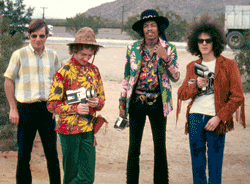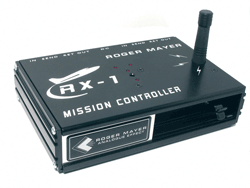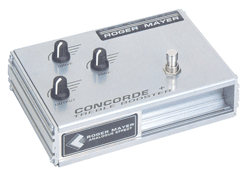The man behind the tones of Jimi, Beck, Page and countless other Octavia users talks about the past and future of effects.
Although it’s a well-worn cliché, it’s only appropriate to say that Roger Mayer has seen it all. Yes, he’s been there—hanging out with Jeff Beck, Jimmy Page and Big Jim Sullivan in the studio, soldering together brand new circuits, innovating and designing solutions for the earliest of tone chasers. He’s done that—watching Jimi Hendrix plug in his new prototype during a late night Olympic Studio session and laying down solos that would launch the dreams and careers of thousands of guitarists to come. 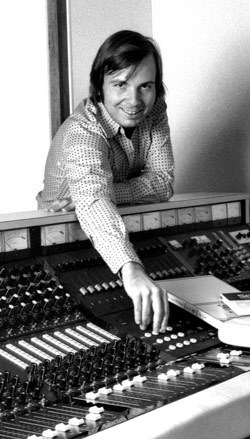
Which, of course, makes an interview with Mayer a bit of a challenge. While he acknowledges that everyone wants to talk about Page and Beck and Hendrix—and is perfectly happy to revisit those stories—there’s a part of Mayer that seems indifferent to the nostalgia. He was there; he’s told that story before. And even though his company, Roger Mayer Guitar Effects, largely exists to dole out the effects that Hendrix made famous, they have not remained static. The company’s Vision Wah features a uniquely ergonomic profile and a treadle made of carbon fiber; he estimates that R&D costs for the project came in at over $150,000. Bread and butter effects like the Octavia and the Axis Fuzz are continually refined and re-engineered, because to Mayer it’s a simple equation: evolve or fade away.
We were able to spend some time with Roger Mayer, to talk about both the past and the present, about his days tinkering in Olympic Studios, and the future of guitar effects.
You started experimenting with pedal designs while you were hanging out with guys like Jimmy Page and Jeff Beck, right?
Yeah, basically. Going way back when I first started, when I was hanging out with them, we were obviously interested in the sound of the guitars on the American records, which were quite hard to come by. We had a really big interest in the different guitar tones that they were producing in America.
What guitar tones were you trying to replicate?
Well, you know, like some of the Elvis records, the Ricky Nelson records back in the sixties, and so forth. We were kind of interested in that, and the first pedal that I built was a treble booster, actually. And looking at the circuit of the Rangemaster, it looks virtually identical to the ones I built back then, you know? [laughs]
Did you have any examples, like the Rangemaster, to look at while you were designing these circuits?
Well, the Rangemaster actually came out after I built mine—they were after the fact. I don’t know anyone that was building them back then.
Did you have a name for your invention at the time?
We didn’t call them anything, they were all prototypes! They weren’t in production, you know. I really didn’t start producing commercial units until about the eighties. So you just called it a treble booster? We just called it what it did—it’s a treble booster, you know?
Were you hearing other fuzz tones around then?
No, no. The first fuzz boxes that Page and I really became aware of, I think, were on the record by the Ventures called “The 2,000 Pound Bee”. That was the first time we thought, “Oh, wow! What is that?” Obviously we had a few contacts in the States, and they said that was a fuzz box. And I asked, “What’s that?” And they said it was basically an overdriven transistor.
Did you like that sound? Or did you like your treble boosters more?
The early ones—especially like the early Gibson Maestros that were featured on “Satisfaction,” which was after Page started using them—didn’t have an awful lot of sustain. They were quite percussive in nature. So I never actually… I don’t think I’ve ever actually played through a Gibson Maestro; I’ve never even bothered with one. I kind of heard what they sounded like on the record, and thought, maybe we could do something a little similar, but with a little more sustain and make it smoother.
You were tweaking on all of these early prototypes in the studio. Do you still enjoy being in that environment?
Oh, definitely. I’m much happier in the studio.
Why’s that?
I like the studio because it’s probably the ultimate creative environment. You have control over so many more things than you would in, say, a live performance. You’ve got control of echo; you’ve got control of pan. You’ve got multiple tracking, you’ve got all kinds of things you can do in the studio that can paint a very interesting sonic picture that you can’t do live. Listen to Hendrix on Axis: Bold as Love. Of course Jimi’s good live, but at the same time we obviously knew playing live you’re probably only going to use three or four sounds. And you’re obviously going to get completely saddled with the acoustics of the room, aren’t you? If the room’s got a nomic types huge amount of reverb, then you’ve got it—you’ve got it on the soft part of the song, you’ve got it on the loud part of the song. You’ve got it all night long, haven’t you? That isn’t going to change, whereas if you’re making a record you can move from echo to drive; you can do all sorts of things. So the amount of control on a record—it’s a far more satisfying experience to actually make a record that can be heard thirty years later and still be appreciated. You can’t say that with a live performance. Only the people that were there heard it live, and I’m not talking about some sort of quasi-live recording that might have been overdubbed four weeks later, you know? [laughs]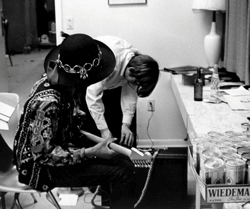
I met him in a nightclub a few days after my 21st birthday. I just went up to him and I talked to him—everybody was there, you know, the Stones, the Who, McCartney. I just said, “Listen man, I’m really into guitar sounds and I’ve done a few for Page and Beck and these people.”
And he was excited, I’m sure.
Oh, yeah, obviously. We were obviously on the same page from day one.
So did you just go into the studio with him after that?
Well, I went to one gig at Chislehurst Caves about two weeks after I met him and showed him one of the first Octavias backstage. He played through it and said, “Can you do that to it?” and I said, “Yeah, Jimi, you know these things are improving week by week as we get more feedback on it.” And he said, “Right; I’m playing at a club called the Ricky-Tick at Hounslow in about another week. Why don’t you bring it along to the gig and after the gig we can go back to Olympic Studios. I gotta record a couple of solos for a couple of tunes I’ve got.”
So after the gig—it was a very low ceiling at the gig, and he put the neck of his guitar through the ceiling; it basically fucked the machine heads on the top of his guitar, right? And we didn’t have a spare guitar then, so we went back to Olympic afterwards, and we had to send Noel around to the flat. He picked up his Telecaster, and that’s when we did the overdub for “Purple Haze” and “Fire,” using the Octavia.
What was the idea behind the original Octavia?
Well, I was thinking as you go up the fretboard, wouldn’t it be nice to double the frequency, so you could play notes that 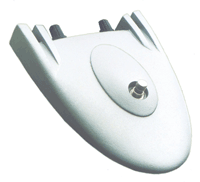
What would be an accurate description?
It’s a mirror imaging technique in electronics. The way it’s actually implemented virtually makes it like a mirror image, you know? It’s a phase-inverted mirror image of the signal, which makes it double.
The Octavia has evolved since those early days. Are you finally happy with the design, or are you still tweaking on it?
Yeah, because there are always things you can do, you know?
Will it ever be finished?
No, I don’t think so. I’ve got a Formula One attitude; there’s always development to be done. There’s always something you can do to make it better, to make it slightly different, to make it use a little bit more input from the player. The current range of, say, the Vision Octavias are much more expressive than the old ones. That’s one of the main reasons I never reissued the transformer version, because it’s like taking a step backwards—there’s no point whatsoever.
And that’s kind of your general philosophy?
It’s forward, never backward, you know? You wouldn’t want Volkswagen to go back to making the same cars they made back in the day. You’d say, “What the fuck is this? This is ridiculous!” Those who can invent, do, you know? Those who can’t, copy.
Digital modeling looks to be that next frontier, and Jimi’s rig has even been the focus of a few software packages. What are your thoughts on that?
[laughs]. Well, let’s put it this way: if you know anything about digital modeling, it’s basically painting by numbers. I mean, the whole thing about any modeling process is that you are making an approximation before you’ve done anything. So it has nothing to do at all about the live performance. It would be like the difference between adding echo to something and playing a guitar where the echo was part of the song.
Do you feel like the guitar industry is caught looking backwards more often than not?
All I can say is, don’t you think it’s like that? Of course it is. I mean, you’ve got so much supposedly retro stuff—retro effects, retro guitars, retro bands—it’s sad. It really is sad, because it’s not giving younger people something of their own, is it? And it’s crazy. Take the stupid concept of buying a guitar that has been aged. That would be like a girl hanging out a pair of ballet shoes in her bedroom that have been aged to look like they’ve been worn by a famous dancer. What’s the fucking point? You’re trying to buy into looking cool; it’s fashion, it’s like buying beaten up jeans.
But isn’t digital where we’re headed?
No, not at all. The fact of the matter is, and the thing that never changes, is that the ears are analog. And analog information is continuous; digital isn’t. Digital, if you equate it to a movie, would be like looking at a close-up where the face is in perfect focus and the background is fuzzy and out of focus, as opposed to a wide shot or another shot where the face and all of the background were in perfect focus. There’s obviously more information in the shot where the background is in perfect focus, right? And the major problem with digital sound, which they can’t get around, is that the majority of the bits are concentrated at the loud parts of the music. In other words, the first 10 or 20 dBs of the music has quite a few bits, but as the music goes down a level, the resolution goes down and down and down, which is the audio equivalent of being out of focus. So that’s why it’s very difficult sometimes to mix digitally on Pro Tools or anything like that, because you just don’t have enough information, you don’t have enough bandwidth. Unless the signals are loud, they get prioritized by loudness, you see? The actual definition of a signal decreases as it goes down, which is kind of crazy, because the ear has the reverse function. In other words, the Fletcher-Munson curves, which are the equal-loudness curves of the ear— your ear perceives frequency response at different sound pressure levels. And the softer it gets, the more treble it needs, right? Which is exactly the reverse of what digital gives you. So, you know, it’s one of those things. That doesn’t mean that you can’t take a recording that’s mixed perfectly in analog, and commit it to digital once. Many albums sound fine as a CD, but the actual definition and amount of detail digital provides is not really that great.
What are you looking towards as the next development in pedal design?
Well, I’m looking forward to—I cannot see any reason why when somebody plays a guitar riff that the whole guitar riff should have the same sound. Why should the front of the guitar riff have the same sound as the rear of it? I believe in more dynamics in the music, more player control, anything to impart to the listener that they are hearing a human performance. I’m not a believer in looping, because I believe that someone playing something ten times in a row is far better than hearing them play it once and having it looped. It’s more interesting and the public can immediately hear some of it is in the performance. 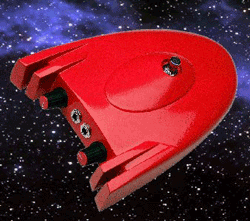
As opposed to sequencer, yes.
And, really, I want people to have fun while they’re playing. Don’t go out and buy a piece of equipment and imagine that you can play like someone else. Don’t buy into that. It’s nonsense. I don’t follow anybody—I don’t want to be influenced in the wrong way.
